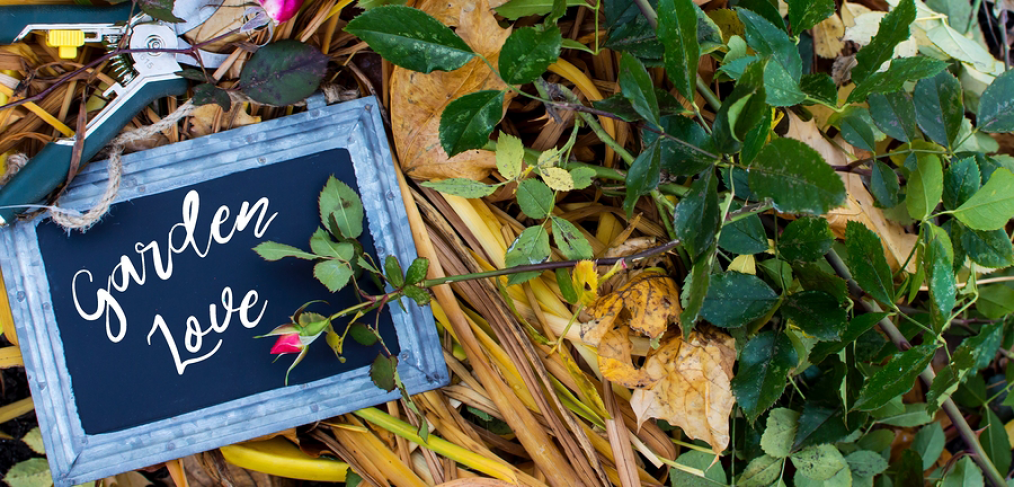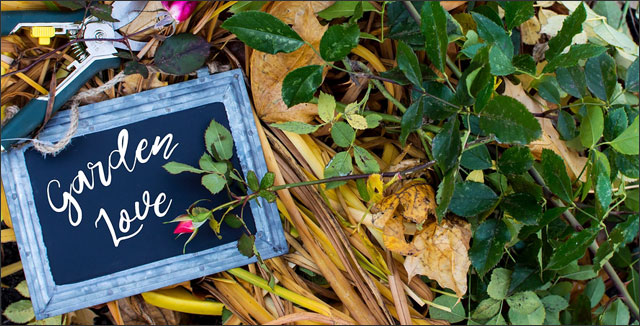
How to Winterize Your Garden – Fall Gardening Tips

Have you been putting off winterizing your garden?
Fall is a busy time. Many of us have kids who go back to school – and all that comes with preparing for that. Many of us have clubs and organizations that begin again in the fall and we resume things we may have taken a break from during the summer.
If you have a garden or trees in your yard, you are probably spending a lot of outdoor time raking, mowing, and harvesting your vegetables. Not to mention preserving them.
And then there’s just the beauty of fall to enjoy! Who wants to spend every Saturday staring at the ground while there is fall foliage to enjoy?
So, if you have waited until now when winter temperatures are just about to – if not have already – hit to prepare your garden for winter, you can still do it. There are a number of things you can do for your trees, shrubs, perennials, annuals, vegetable gardens and sundry that will help them come back better than ever in spring.
Most, if not all, of your plants and trees will be preparing for dormancy by now. They may not all be blooming or still green, but there’s still a lot of activity going on under the soil before it freezes.
Some plants are still growing roots and drawing on the nutrients and moisture still in it. Earthworms and beneficial microbes are still processing and making soil. Plus, some of your plants’ top parts need protecting from frost, snow and winter storms.
How to Winterize Your Flower Garden
Your perennials and annuals can use care at this time!
- Cut back your perennials a bit, and mulch to protect from the worst of the cold weather.
- If you have bulbs, now is the time to dig them up and store them. Brush off excess dirt but don’t wash them. The water will make them rot in storage.
- Mulch your bulb beds with evergreen boughs in order to keep the beds from shifting and cracking in the cold temperatures.
- Store your bulbs in a box or other breathable container with layers of paper in between. They shouldn’t be stacked on top of each other. A cool, dry area works best for bulb storage – like a garage refrigerator or a cool basement.
- You can keep your annuals blooming longer by protecting them with a light fabric to keep off the first few frosts, but eventually the cold daytime temps and less light will do them in.
- If you’ve been quick enough to gather seeds from your flowers that will breed true to type, store the warm-weather seeds for spring planting.
- Cold-hardy seeds can be planted for winter bloom at this time.
- Pull up your dead annuals and compost, unless they have fungus – in which case they will need to be burned or thrown in the trash.
- Mulch your beds with 3-4 inches of leaves or other similar material. Some self-seeding annuals will be coming back in spring – only mulch with about 2 inches of material for these beds.
- Another good idea is to take cuttings of your geraniums, impatiens, and begonias for houseplants during the winter.
- Hybrid tea roses are very vulnerable to winter cold. Cover with a rose cone or a cloche before frost.
- Easy-grown roses, like shrub roses can be protected with a mound of mulch over the lower parts of their canes and sheltered with a burlap screen if you have very cold temperatures in winter.
How to Winterize Your Vegetable Garden
Veggie gardens need fall love too. If you’re like a lot of home gardeners, your vegetable patch could be pretty raggedy right now. Here is how to winterize your vegetable garden.
- A light fabric can work well for the summer crops still hanging on, to keep off the first few frosts. Pumpkins, potatoes, sweet potatoes, onions, Brussels sprouts, carrots, and other root crops can make it through the first frosts. However, they should be harvested as the daytime temps and available sunlight hours lessen.
- Root crops including carrots, turnips, beets, rutabagas, and parsnips will all weather frost and can be removed later. They should be dug up and stored before the ground freezes.
- Potatoes will stay well in the soil. However, they need to be dug up and immediately put in dry storage in a warm place, not left on the soil for any length of time. Dry them in one layer, turning periodically. It should take you two weeks to dry your potatoes right. Don’t wash them, only wipe off the dirt. The skin toughens up for longer winter storage.
- Winter greens like kale and collards like the cold weather and become sweeter with a light frost. Cabbage and Swiss chard can withstand light frost, but leaf lettuce can’t.
- All the plant debris needs to be cleaned up on the surface of the soil – compost whatever isn’t producing anymore and is disease free – and mulch or cover crops need to be sown to protect your beds over the winter.
- It’s a good idea to till your soil at this point. It exposes any insects – like Japanese beetles whose grubs overwinter in the ground. You can also add a layer of compost like leaves and manure and get your soil tested to see if you need to add any nutrients for next year.
- You can also sow cover crops like winter rye that will improve your soil.
- If you have areas that are hopeless with weeds, cover them with black tarp to kill off weeds before next season.
- Cover your strawberry beds with straw or hay.
How to Winterize Trees and Shrubs
Shrubs and young trees should be transplanted, if need be, in the early fall. If you have little rainfall, you need to water your trees and especially evergreens deeply before the ground freezes. For optimal results, install Rootwell Pro-318s to enhance a tree’s natural ability to absorb oxygen, water, and nutrients.
A winter mulch of organic material up to 6 inches thick should be spread around your trees and young trees should be fertilized.
How to Winterize Berry Shrubs
- By mid-fall, you should prune your summer raspberries. Leave 6 of the strongest canes for every 1 foot of your row of shrubs.
- Fall raspberries should be pruned ruthlessly by cutting them to the ground after they bear fruit. This plant will sprout new canes in the spring.
- Blackberries should be planted in the fall and mounded to prevent the frosts from pushing them up out of the ground.
Takeaway
If you have waited until now to think about winterizing your garden, don’t despair. Do your best to prune, clear and protect fragile plants. You will be rewarded with new growth and bounty in a few months’ time.

